
Camiguin: The Island Born of Fire
Discover Camiguin: The Island Born of Fire, where lush forests, stunning volcanoes, and rich cultural heritage meet pristine beaches and warm hospitality.
Nestled in the Bohol Sea, Camiguin is a small, pear-shaped volcanic island in the Philippines, known for its stunning natural beauty and rich history. The island, often dubbed the 'Island Born of Fire,' is home to seven volcanoes, lush forests, and pristine beaches, making it a paradise for nature lovers and adventure seekers alike. Camiguin offers a variety of activities for tourists. You can trek up Mount Hibok-Hibok, a volcano with panoramic views, or take a dip in the refreshing waters of the Tuasan Falls. The Sunken Cemetery, a hauntingly beautiful underwater landmark, is a must-visit for divers and snorkelers. For a more relaxed experience, unwind in the Ardent Hot Springs or explore the white sands of White Island, a sandbar that appears and disappears with the tide. The island's rich cultural heritage is evident in its many festivals and local crafts. The annual Lanzones Festival celebrates the bountiful harvest of the local lanzones fruit with colorful parades, dances, and local delicacies. Don't miss the chance to visit the Old Spanish Church Ruins in Catarman, a testament to the island's storied past. Camiguin is also known for its warm and welcoming locals. Their hospitality will make you feel right at home as you explore the island's many attractions. Whether you're an adventurer, a history buff, or simply looking to relax, Camiguin offers something for everyone.
Local tips in Camiguin
- Visit during the dry season (March to June) for the best weather.
- Rent a motorbike or scooter to easily explore the island at your own pace.
- Bring cash as many small establishments do not accept credit cards.
- Don't forget to try the local lanzones fruit during the Lanzones Festival in October.
- Be prepared for limited Wi-Fi and mobile signal in some parts of the island.
- Respect local customs and traditions, especially when visiting religious sites.
Camiguin: The Island Born of Fire
Nestled in the Bohol Sea, Camiguin is a small, pear-shaped volcanic island in the Philippines, known for its stunning natural beauty and rich history. The island, often dubbed the 'Island Born of Fire,' is home to seven volcanoes, lush forests, and pristine beaches, making it a paradise for nature lovers and adventure seekers alike. Camiguin offers a variety of activities for tourists. You can trek up Mount Hibok-Hibok, a volcano with panoramic views, or take a dip in the refreshing waters of the Tuasan Falls. The Sunken Cemetery, a hauntingly beautiful underwater landmark, is a must-visit for divers and snorkelers. For a more relaxed experience, unwind in the Ardent Hot Springs or explore the white sands of White Island, a sandbar that appears and disappears with the tide. The island's rich cultural heritage is evident in its many festivals and local crafts. The annual Lanzones Festival celebrates the bountiful harvest of the local lanzones fruit with colorful parades, dances, and local delicacies. Don't miss the chance to visit the Old Spanish Church Ruins in Catarman, a testament to the island's storied past. Camiguin is also known for its warm and welcoming locals. Their hospitality will make you feel right at home as you explore the island's many attractions. Whether you're an adventurer, a history buff, or simply looking to relax, Camiguin offers something for everyone.
When is the best time to go to Camiguin?
Iconic landmarks you can’t miss
Paras Beach Resort
Experience the beauty and tranquility of Camiguin at Paras Beach Resort, where relaxation meets adventure in a stunning beachfront setting.

Sunken Cemetery
Explore the haunting beauty of the Sunken Cemetery in Camiguin, a historical landmark where nature and history converge in a stunning setting.

Camiguin Island
Unveil the natural wonders of Camiguin Island, a hidden gem in the Philippines with breathtaking landscapes, rich culture, and unique volcanic features.
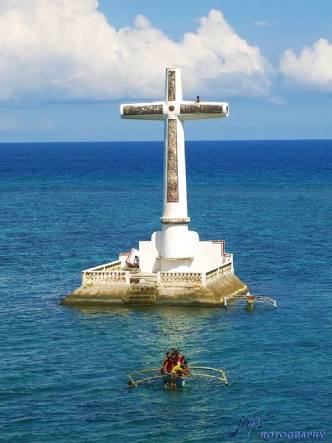
Old Spanish Church Ruins
Explore the Old Spanish Church Ruins in Camiguin: A historical landmark embodying the island's colonial heritage and architectural beauty.
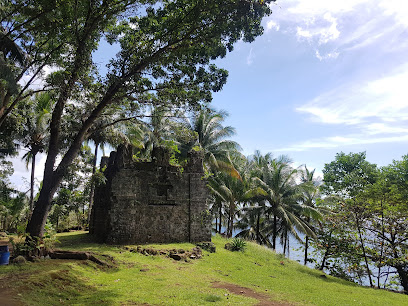
Benoni Port
Experience the vibrant atmosphere and stunning views of Benoni Port in Mahinog, Camiguin, a gateway to island adventures and local culture.
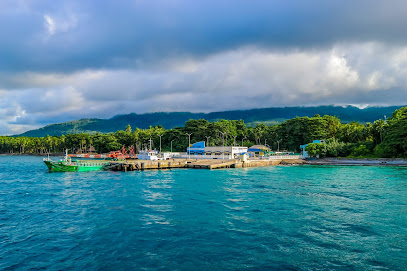
Katibawasan Falls
Experience the breathtaking beauty of Katibawasan Falls, a must-visit natural wonder in Camiguin, Philippines.

Tuasan Falls
Explore the breathtaking Tuasan Falls in Camiguin, a serene escape into nature's beauty with crystal-clear waters and lush surroundings.
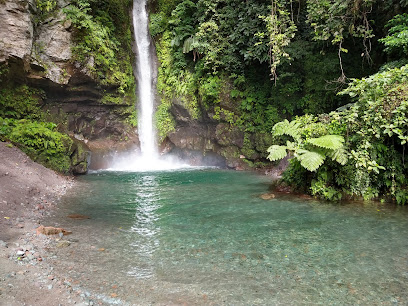
Ardent Hibok-Hibok Spring Resort
Experience the healing waters of Ardent Hibok-Hibok Spring Resort, a tranquil haven in Camiguin, perfect for relaxation and rejuvenation amidst nature's beauty.
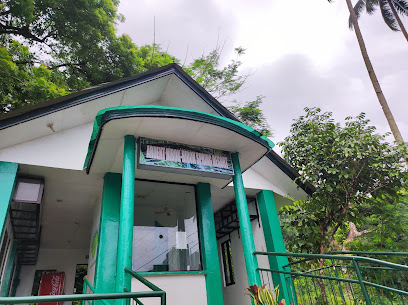
St. Nino Cold Spring
Discover the serene beauty of St. Nino Cold Spring in Camiguin, a perfect getaway for nature lovers seeking tranquility and refreshment.
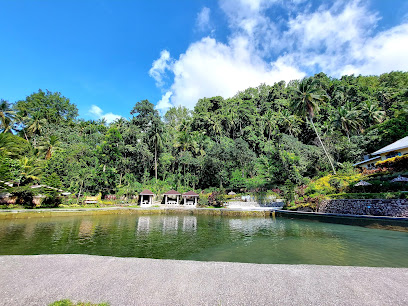
Mantigue Island
Explore the pristine beauty of Mantigue Island, a tropical paradise in the Philippines with stunning beaches, vibrant marine life, and rich cultural experiences.
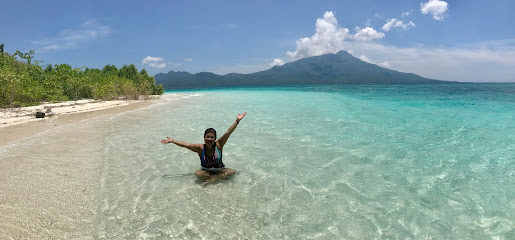
Soda Water Pool
Discover the unique Soda Water Pool in Camiguin, where refreshing, naturally carbonated waters meet stunning natural beauty for an unforgettable experience.
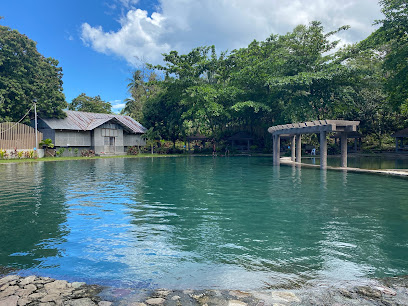
Giant Clams Sanctuary & White Beach
Experience the beauty of nature at Giant Clams Sanctuary & White Beach, a hidden paradise in Guinsiliban, famous for its giant clams and pristine shores.
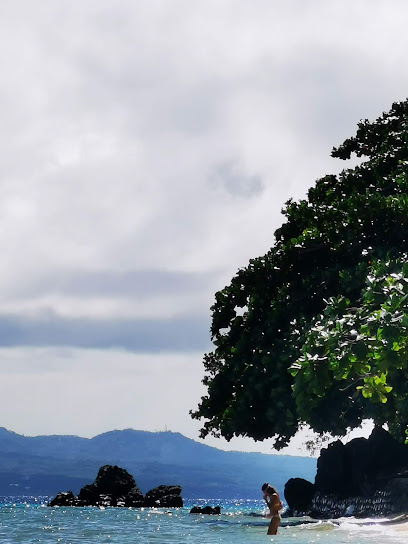
The Walkway To The Old Volcano and Stations of the Cross
Explore the enchanting Walkway to the Old Volcano in Camiguin, where nature meets spirituality amid breathtaking landscapes.
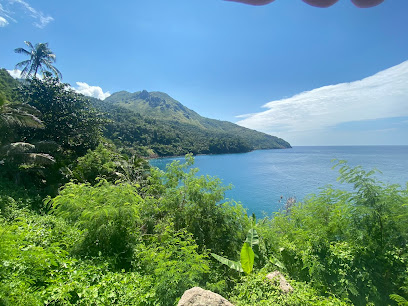
Pabua's Cottages
Experience the serene beauty of Camiguin at Pabua's Cottages, a perfect blend of comfort, nature, and local culture.

Luna Ristorante Italiano
Experience authentic Italian dining at Luna Ristorante Italiano in Camiguin, where delicious pizza and a cozy atmosphere await.
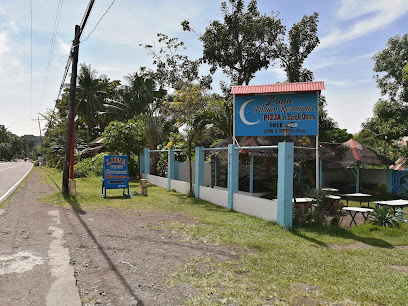
Unmissable attractions to see
White Island
Explore the breathtaking beauty of White Island, a serene tropical haven in Camiguin, renowned for its pristine beaches and vibrant marine life.
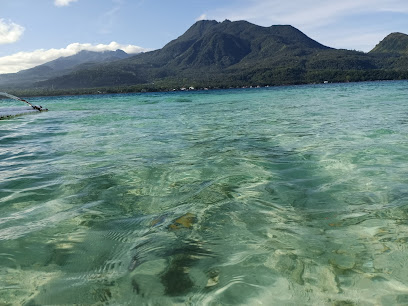
Tuasan Falls
Experience the breathtaking beauty of Tuasan Falls, a hidden gem in Camiguin, where nature's tranquility meets adventure in a stunning tropical paradise.
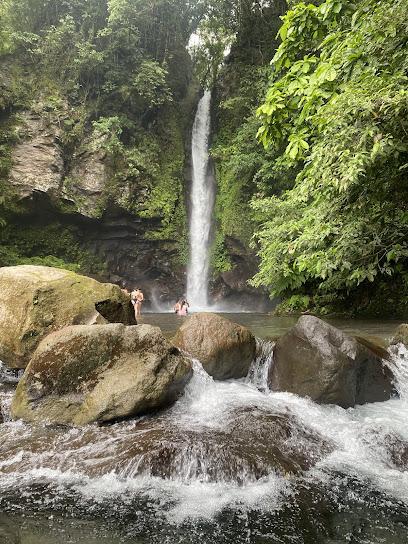
St. Nino Cold Spring
Discover St. Nino Cold Spring in Camiguin, a serene retreat featuring crystal-clear waters and lush landscapes for a refreshing escape.
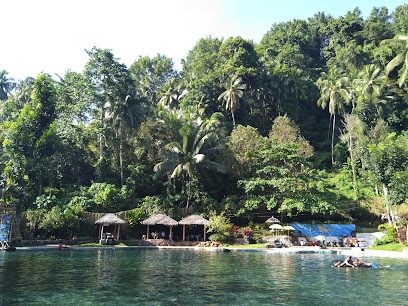
The Walkway To The Old Volcano and Stations of the Cross
Discover the serene Walkway to the Old Volcano in Camiguin, a perfect blend of spirituality and scenic beauty.
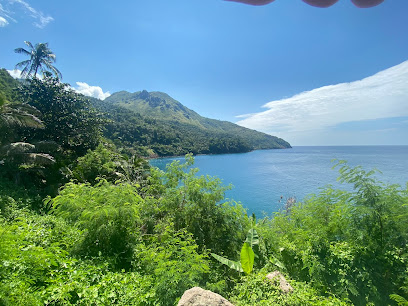
Mantigue Sanctuary
Explore the untouched beauty of Mantigue Sanctuary, a pristine wildlife refuge in Bohol, offering stunning landscapes and vibrant marine life.
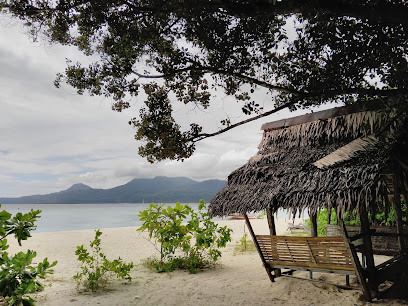
Katunggan Park
Discover the natural beauty of Katunggan Park, a tranquil retreat in Mahinog, Camiguin, perfect for nature lovers and relaxation seekers.
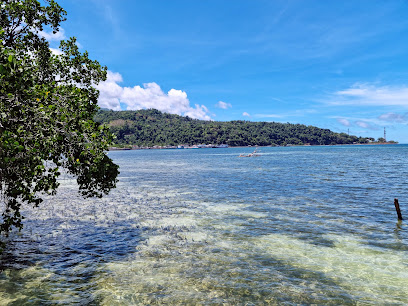
White Island
Explore the unspoiled beauty of White Island, a stunning tropical paradise in the Philippines, perfect for relaxation and adventure.
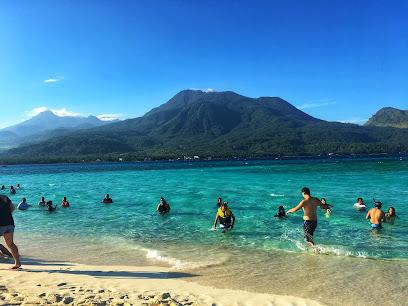
Binangawan Falls
Experience the breathtaking beauty of Binangawan Falls in Camiguin, a hidden gem for nature lovers and adventure seekers alike.
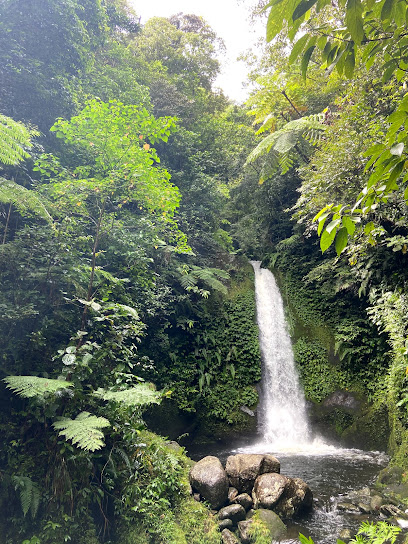
Scuba De Oro
Explore the breathtaking marine life and dive into adventure at Scuba De Oro, the ultimate SCUBA diving destination in Camiguin, Philippines.
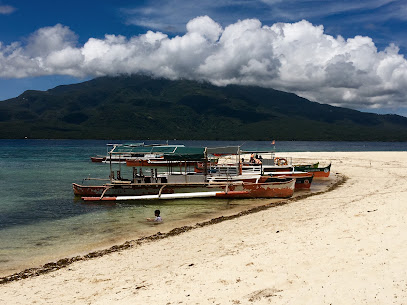
Camiguin Aviation Sightseeing & Acro-Adventure Flights
Discover Camiguin from above with thrilling flights that showcase the island's stunning landscapes and natural wonders, perfect for adventure lovers and nature enthusiasts.
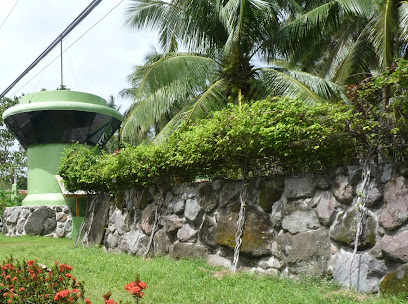
Seaside Traveler's Inn By Camiguin Island Home
Discover the serene beauty of Camiguin Island while staying at Seaside Traveler's Inn, a perfect blend of comfort, charm, and local hospitality.

Paderanga Macao Spring
Experience the natural beauty and rejuvenating waters of Paderanga Macao Spring in Mahinog, Camiguin - a serene escape for every traveler.
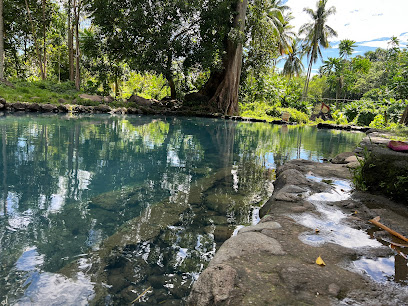
View Deck, Minsua, San Isidro
Experience the tranquility and breathtaking views at Minsua View Deck, a hidden gem in the lush landscapes of Camiguin, Philippines.
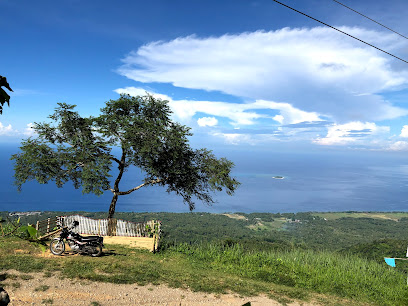
Limason falls
Experience the serene beauty of Limason Falls in Camiguin, a tranquil escape surrounded by lush landscapes and cascading waters.
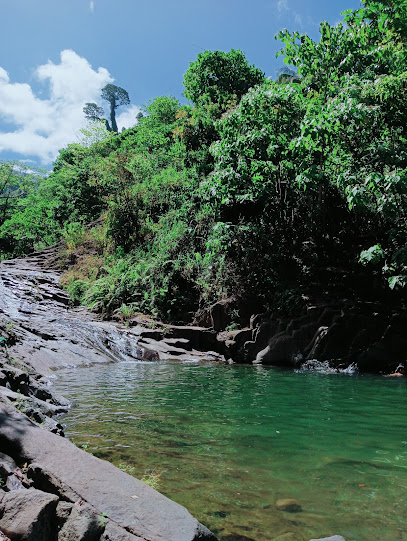
Bangbanganon Cold Spring
Experience the tranquility of Bangbanganon Cold Spring in Sagay, Camiguin—your perfect escape into nature's serene beauty.
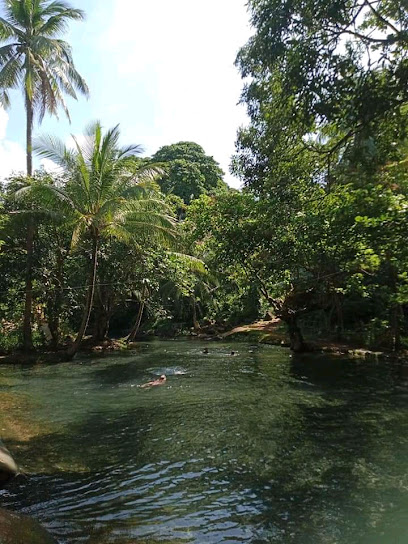
Essential places to dine
La Dolce Vita
Experience authentic Italian cuisine at La Dolce Vita in Mambajao—your go-to pizza destination on beautiful Camiguin Island.
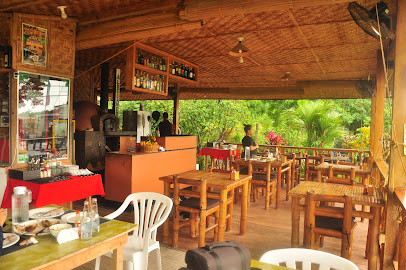
CheckPoint Camiguin
Explore the vibrant culinary scene at CheckPoint Camiguin – where local flavors meet international cuisine in a lively atmosphere.
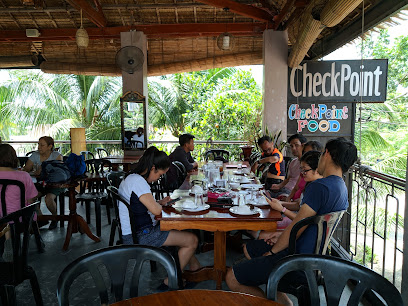
Guerrera Restaurant/Guerrera Rice Paddy Villas
Experience exquisite Asian cuisine surrounded by breathtaking rice paddies at Guerrera Restaurant in Camiguin.
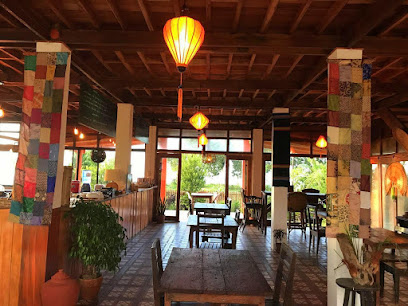
Luna Ristorante Italiano
Experience authentic Italian cuisine at Luna Ristorante Italiano in Camiguin – where every meal is a delightful journey into Italy's culinary heritage.
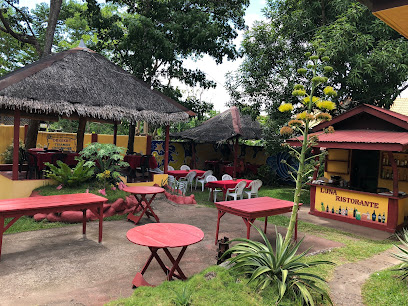
Alex Restaurant + Bar
Experience exquisite dining at Alex Restaurant + Bar in Camiguin, offering fresh seafood and vibrant cocktails amidst stunning views.
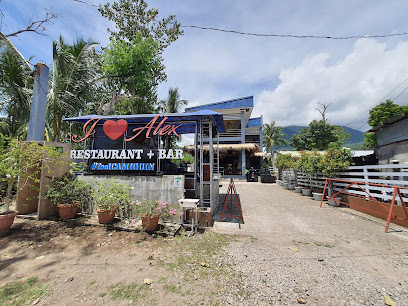
J&A Fishpen
Experience fresh seafood delights at J&A Fishpen in Camiguin, where stunning views meet exceptional local flavors for an unforgettable dining adventure.
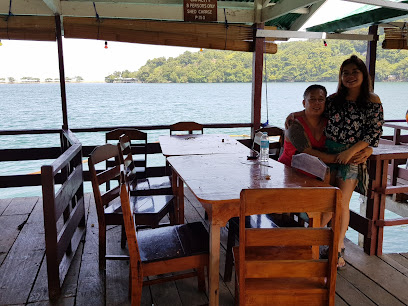
Paradiso Hillside restaurant
Experience authentic Filipino and Italian cuisine at Paradiso Hillside Restaurant with breathtaking views of Camiguin's natural beauty.
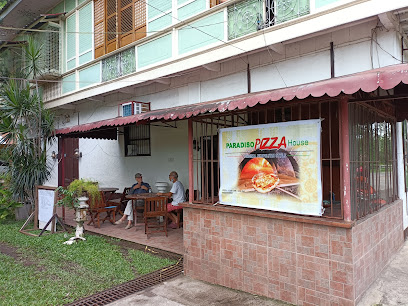
Daos Plant-Based Kitchen
Experience the fusion of vegan delights and Filipino flavors at Daos Plant-Based Kitchen in scenic Camiguin.
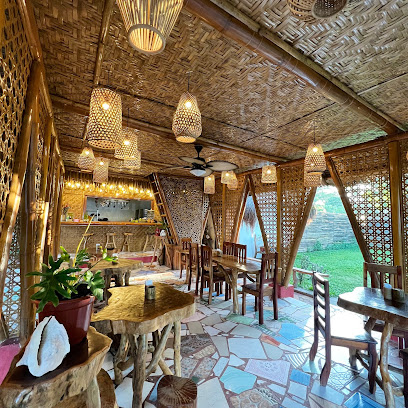
Northern Lights Restaurant Balbagon
Experience the best pizza on Camiguin Island at Northern Lights Restaurant—where flavor meets stunning island views.
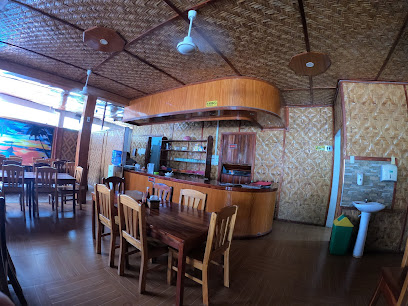
Viola's Snack Bar
Discover authentic Filipino snacks at Viola's Snack Bar in Mambajao, Camiguin – a delightful pitstop for every traveler.
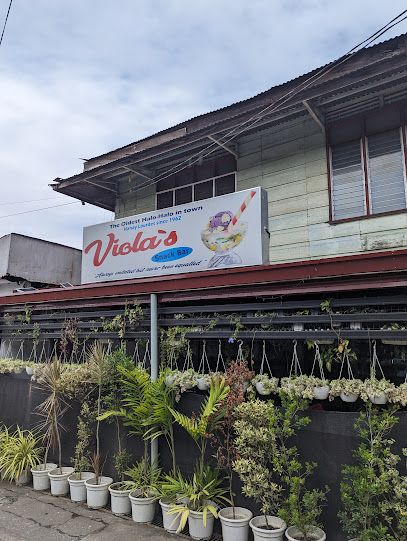
Cenote Bar and Grill
Discover local flavors at Cenote Bar and Grill in Camiguin - where exceptional cuisine meets stunning views.
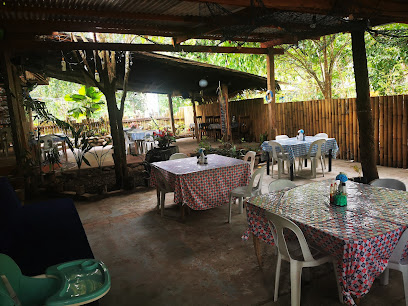
Tambayan Sa Kanto Tuna Restaurant
Discover authentic Filipino cuisine at Tambayan Sa Kanto Tuna Restaurant in Mambajao, Camiguin—where fresh flavors meet warm hospitality.
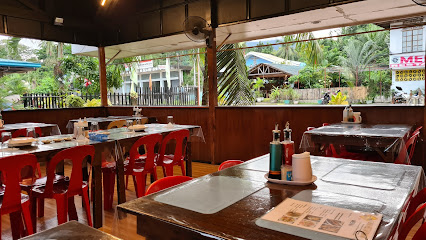
I 8 See Food “Seefood Sa Bilao”
Discover the vibrant flavors of Filipino cuisine at I 8 See Food in Mambajao, Camiguin – where seafood meets tradition.
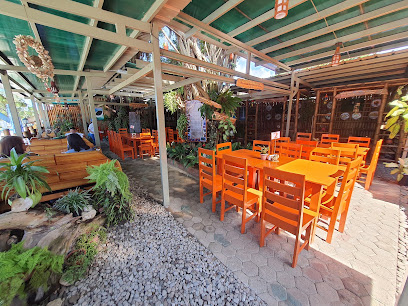
Samuel by VjANDEP - Hotel and Restaurant
Discover delightful local flavors at Samuel by VjANDEP - a must-visit restaurant in Mambajao, Camiguin.
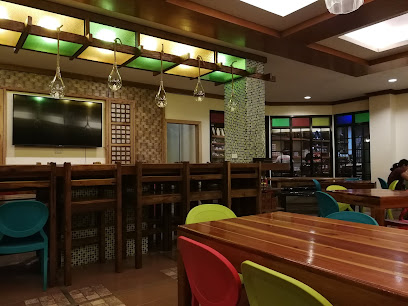
HARANA
Discover Harana in Mambajao for an unforgettable grill experience that captures the essence of Camiguin's culinary delights.
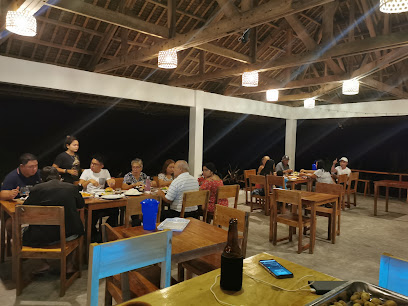
Markets, malls and hidden boutiques
Gaisano Camiguin
Explore Gaisano Camiguin, your ultimate shopping haven on the beautiful island of Camiguin, blending local culture with modern shopping experiences.
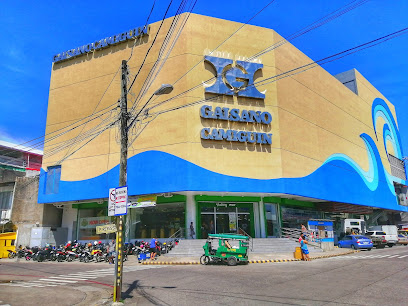
Pasalubong sa Camiguin
Explore the vibrant local crafts and delicious treats at Pasalubong sa Camiguin, the island's premier gift shop for unique souvenirs.
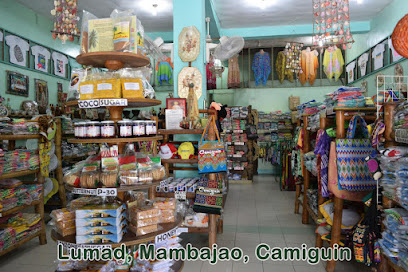
Janca Souvenirs (Sunken Cemetery Branch)
Explore Janca Souvenirs in Camiguin for unique clothing and local crafts reflecting the island's vibrant culture and artistry.
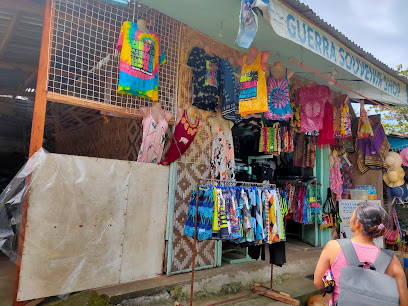
ENGUITO STORE
Enguito Store in Camiguin: Your Local Hub for Essentials and Unique Finds on the Island.
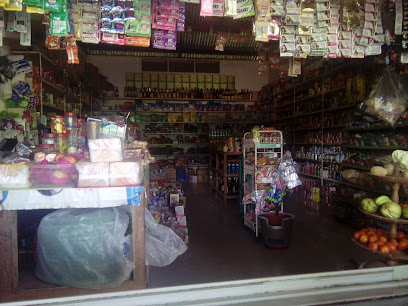
Oliveros Store
Visit Oliveros Store in Mambajao, Camiguin for a taste of local convenience and charm, where essentials meet island culture.
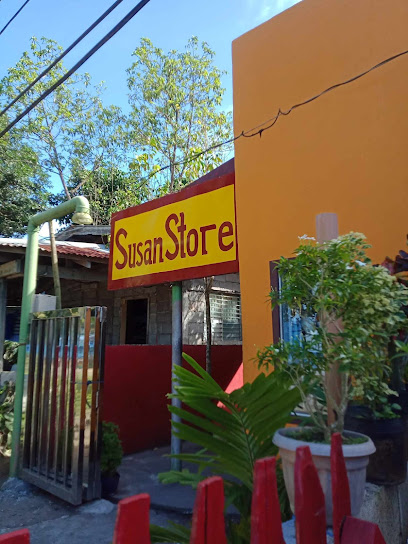
Island Foodhouse & Souvenir
Discover unique souvenirs and local delicacies at Island Foodhouse & Souvenir in Camiguin, a must-visit destination for every traveler.
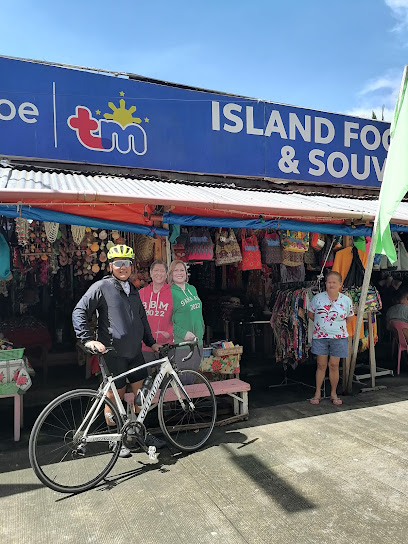
Revillar Store
Discover the essence of Camiguin at Revillar Store, a charming destination for unique local products and authentic souvenirs.

Nene Uy Store Wholesale & Retail
Discover the charm of local shopping at Nene Uy Store in Mambajao, Camiguin - a grocery haven for fresh produce and local delicacies.
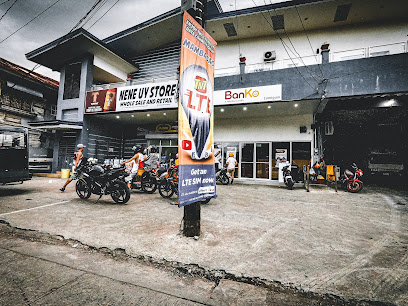
Lita Ladra's store
Explore the local flavors of Camiguin at Lita Ladra's Store, where unique finds and authentic products await every traveler.
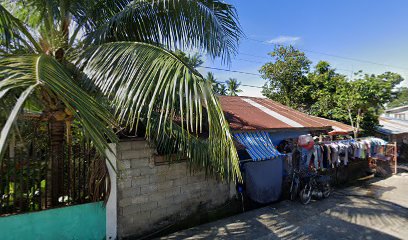
Bation Store
Explore local flavors at Bation Store, a charming grocery destination in Mambajao, Camiguin, perfect for tourists seeking authentic island experiences.
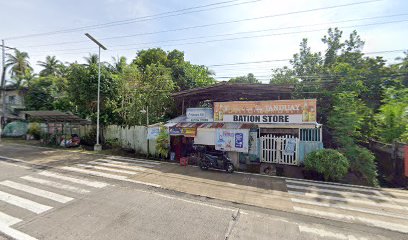
Loreta's Place
Explore the unique offerings of Loreta's Place, your go-to store for authentic souvenirs and local crafts in Mambajao, Camiguin.
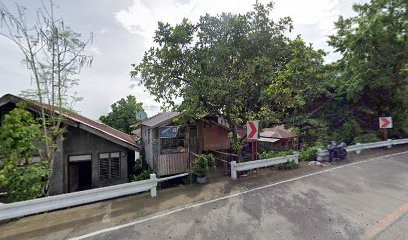
Sam Store
Discover fresh local flavors and essentials at Sam Store, your friendly neighborhood grocery in Mambajao, Camiguin.

Durango store
Experience the essence of Camiguin at Durango Store, your go-to grocery destination for local delicacies and everyday essentials.

Galagar Store
Discover local flavors and authentic Camiguin culture at Galagar Store, a charming grocery shop in Mambajao.
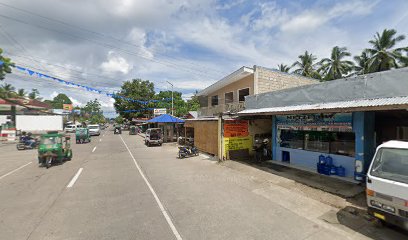
Senara Store
Explore Senara Store in Camiguin for a taste of local flavors and everyday essentials, ideal for tourists seeking to immerse in island culture.
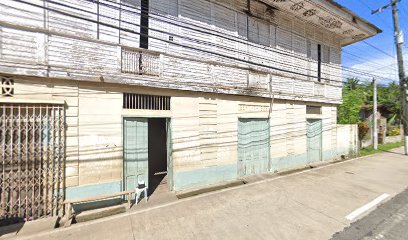
Essential bars & hidden hideouts
Alex Restaurant + Bar
Experience the perfect blend of local flavors and international cuisines at Alex Restaurant + Bar in Mambajao, Camiguin.
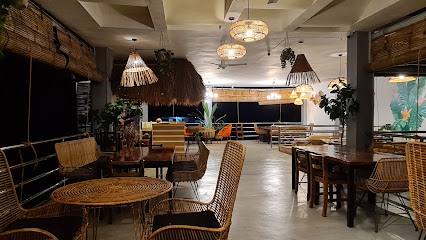
Cenote Bar and Grill
Discover the flavors of Camiguin at Cenote Bar and Grill, where local cuisine meets breathtaking island views.
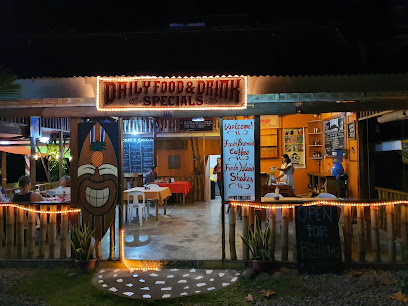
HARANA
Experience the authentic taste of Camiguin at Harana – a grill restaurant where local flavors and exceptional service come together.

ISLA 9100 Restobar
ISLA 9100 Restobar: A vibrant bar and restaurant in Mambajao, Camiguin, offering delicious local flavors and a lively atmosphere.
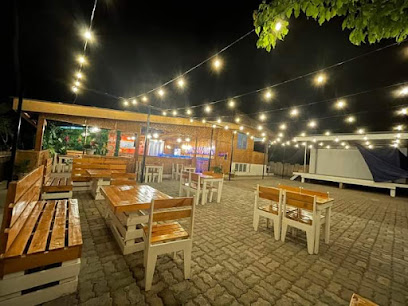
Shriner's Sports Pub
Experience the vibrant atmosphere and delicious grilled dishes at Shriner's Sports Pub, a culinary gem in the heart of Camiguin.
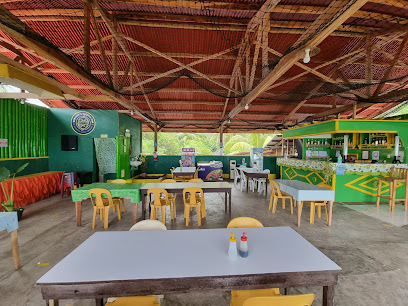
M&J Restobar & KTV
Discover the lively atmosphere of M&J Restobar & KTV in Camiguin, where great food, drinks, and karaoke come together for an unforgettable experience.
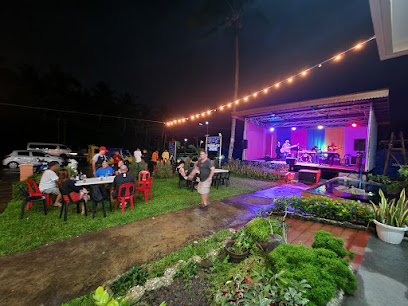
Green Mango Pub
Discover the vibrant nightlife at Green Mango Pub in Camiguin, where delicious food and refreshing drinks create unforgettable moments under the stars.
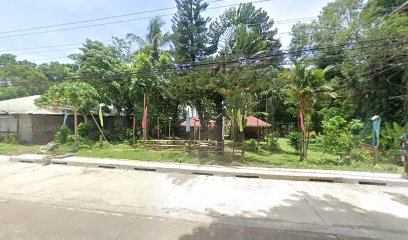
Pippa
Discover the tropical charm of Pippa, a vibrant bar in Mambajao, Camiguin, where relaxation meets local flavors in a cozy atmosphere.
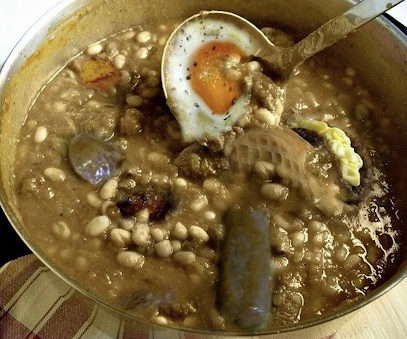
90 Degrees
Experience the vibrant nightlife and refreshing cocktails at 90 Degrees, the ultimate bar destination in Mambajao, Camiguin.
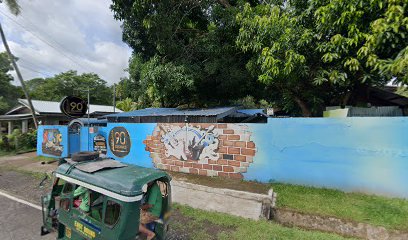
Hang-O-Beer Bar & Grill
Experience the lively atmosphere of Hang-O-Beer Bar & Grill in Camiguin, where delicious food and refreshing drinks await you.

VF Art Bar
Experience the perfect blend of art, culture, and refreshing drinks at VF Art Bar in Mambajao, Camiguin, a must-visit for every tourist.
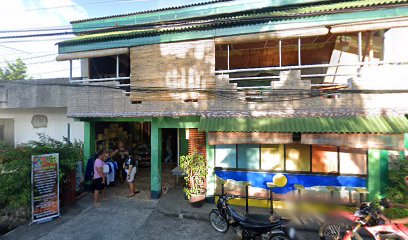
AREA 51
Experience the best grilled delicacies in Camiguin at Area 51, a lively bar and grill that combines local flavors with a vibrant atmosphere.
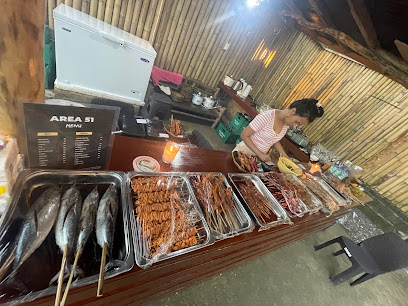
Lailai foodhouse & family ktv bar
Discover the flavors of Filipino cuisine and the joy of karaoke at Lailai Foodhouse & Family KTV Bar in Mambajao, Camiguin.
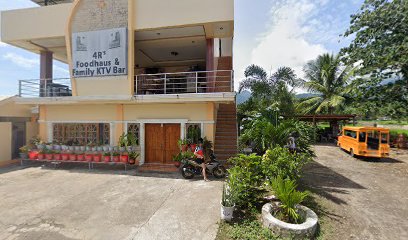
Tangaro Catarman Camiguin
Experience the vibrant nightlife of Camiguin at Tangaro Catarman, a lively bar offering refreshing drinks and a friendly atmosphere.
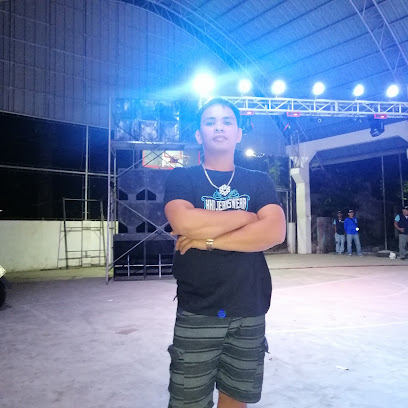
Arjun B. Apit
Discover the vibrant nightlife at Arjun B. Apit, a lively bar in Mambajao, Camiguin, perfect for unwinding with locals and fellow travelers.
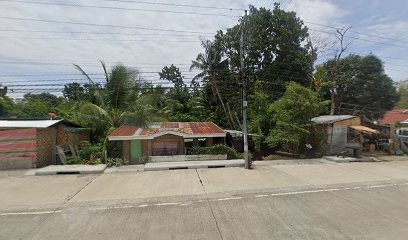
Local Phrases
-
- HelloKumusta
[koo-mus-tah] - GoodbyePaalam
[pah-ah-lahm] - YesOo
[oh-oh] - NoHindi
[hin-dee] - Please/You're welcomePakiusap/Pagpalain
[pah-kee-oo-sahp/pahg-pah-lah-een] - Thank youSalamat
[sah-lah-maht] - Excuse me/SorryPasensya/ Paumanhin
[pah-sehn-syah/pah-oo-mahn-heen] - How are you?Kamusta ka?
[kah-mus-tah kah] - Fine. And you?Mabuti. Ikaw?
[mah-boo-tee. ee-kahw] - Do you speak English?Nagsasalita ka ba ng English?
[nag-sah-sah-lee-tah kah bah ng English] - I don't understandHindi ko maintindihan
[hin-dee koh mai-een-teen-dee-hahn]
- HelloKumusta
-
- I'd like to see the menu, pleaseGusto ko sanang makita ang menu, pakiusap
[goo-stoh koh sah-nahng mah-kee-tah ahng meh-noo, pah-kee-oo-sahp] - I don't eat meatHindi ako kumakain ng karne
[hin-dee ah-koh koo-mah-kah-een ng kahr-ne] - Cheers!Mabuhay!
[mah-boo-high] - I would like to pay, pleaseGusto ko sanang magbayad, pakiusap
[goo-stoh koh sah-nahng mahg-bah-yahd, pah-kee-oo-sahp]
- I'd like to see the menu, pleaseGusto ko sanang makita ang menu, pakiusap
-
- Help!Tulong!
[too-long] - Go away!Lumisan ka!
[loo-mee-sahn kah] - Call the Police!Tawagin ang Pulis!
[tah-wah-geen ahng poo-lees] - Call a doctor!Tawagin ang doktor!
[tah-wah-geen ahng dohk-tohr] - I'm lostNawawala ako
[nah-wah-wah-lah ah-koh] - I'm illMay sakit ako
[mahy sah-keet ah-koh]
- Help!Tulong!
-
- I'd like to buy...Gusto kong bumili ng...
[goo-stoh kohng boo-mee-lee ng] - I'm just lookingNagbabalak lang ako
[nag-bah-bah-lahk lahng ah-koh] - How much is it?Magkano ito?
[mahg-kah-noh ee-toh] - That's too expensiveMasyadong mahal yan
[mahs-yah-dohng mah-hahl yahn] - Can you lower the price?Pwede bang babaan ang presyo?
[pweh-deh bahng bah-bah-ahn ahng preh-syoh]
- I'd like to buy...Gusto kong bumili ng...
-
- What time is it?Anong oras na?
[ah-nawng oh-rahs nah] - It's one o'clockAlas uno na
[ah-lahs oo-no nah] - Half past (10)Alas diyes y medya
[ah-lahs deeh-es ee may-dyah] - MorningUmaga
[oo-mah-gah] - AfternoonHapon
[hah-pohn] - EveningGabi
[gah-bee] - YesterdayKahapon
[kah-hah-pohn] - TodayNgayon
[ngah-yohn] - TomorrowBukas
[boo-kahs] - 1Isa
[ee-sah] - 2Dalawa
[dah-lah-wah] - 3Tatlo
[taht-loh] - 4Apat
[ah-paht] - 5Lima
[lee-mah] - 6Anim
[ah-neem] - 7Pito
[pee-toh] - 8Walo
[wah-loh] - 9Siyam
[see-yahm] - 10Sampu
[sahm-poo]
- What time is it?Anong oras na?
-
- Where's a/the...?Saan ang...?
[sah-ahn ahng] - What's the address?Anong address nito?
[ah-nawng ah-drehs nee-toh] - Can you show me (on the map)?Pwede mo ba akong ipakita (sa mapa)?
[pweh-deh moh bah ah-kohng ee-pah-kee-tah sah mah-pah] - When's the next (bus)?Kailan ang susunod na (bus)?
[kahy-lahn ahng soo-soo-nod nah (bus)] - A ticket (to ....)Isang ticket (papuntang ....)
[ee-sahng ticket (pah-poon-tahng)]
- Where's a/the...?Saan ang...?
History of Camiguin
-
Before the arrival of Spanish colonizers, Camiguin was inhabited by the Manobo and Visayan tribes. These indigenous communities thrived through fishing, farming, and trading with nearby islands. They left behind a legacy of oral traditions and cultural practices that are still evident today.
-
Camiguin came under Spanish rule in the 16th century, and the island saw the establishment of Catholicism. The Spanish built churches and other infrastructures, including the Guiob Church in Catarman, which was later destroyed by volcanic eruptions. The influence of Spanish culture is still visible in the island’s festivals, architecture, and traditions.
-
One of the most significant historical events in Camiguin is the series of eruptions of Mount Vulcan, particularly in 1871 and 1948. The 1871 eruption buried the town of Catarman under volcanic debris, leading to the creation of the Sunken Cemetery. This event reshaped the island both physically and culturally.
-
During World War II, Camiguin was occupied by Japanese forces. The island’s residents experienced hardship and resistance during this period. Several guerrilla groups formed to oppose the occupation, and various skirmishes took place. The war left an indelible mark on the collective memory of the island’s inhabitants.
-
After World War II, Camiguin embarked on a path to recovery. The island’s agricultural sector revived, and fishing became a primary livelihood for many residents. Infrastructure development, including roads and schools, began to take shape, setting the stage for the island’s eventual rise as a tourist destination.
-
Today, Camiguin is known for its rich cultural heritage and natural beauty. The Lanzones Festival celebrates the island’s agricultural bounty, and historical sites like the Sunken Cemetery and Old Guiob Church Ruins attract tourists from around the world. The island’s blend of history, culture, and nature makes it a unique destination in the Philippines.
Camiguin Essentials
-
Camiguin is accessible primarily by air and sea. The nearest major airport is in Cagayan de Oro, Misamis Oriental. From there, you can take a ferry from Balingoan Port to Benoni Port in Camiguin, which takes about an hour. Alternatively, you can fly directly to Camiguin Airport from Cebu, with flights offered by local airlines. Sea travel is also an option, with ferries and fast craft services available from Cebu and Bohol.
-
Once in Camiguin, you can get around by renting a motorbike or scooter, which is a popular option among tourists. Tricycles and multicabs are available for short distances and are a common mode of local transport. For a more convenient option, you can hire a private car or van, particularly if you are traveling in a group. Bicycles are also available for rent for those who prefer a more eco-friendly way to explore the island.
-
The official currency in the Philippines is the Philippine Peso (PHP). While some hotels and restaurants in Camiguin accept credit cards, it's advisable to carry cash, especially for smaller establishments and local markets. ATMs are available in Mambajao, the island's capital, but it's recommended to have enough cash on hand as ATMs might not always be reliable. Currency exchange services are limited, so exchanging money in major cities before arriving in Camiguin is advisable.
-
Camiguin is generally a safe destination for tourists. However, as with any travel destination, it is important to take standard safety precautions. Avoid walking alone at night in secluded areas and keep your belongings secure in crowded places. There are no specific high-crime areas targeting tourists, but always be vigilant and aware of your surroundings. It's also advisable to follow local advice regarding natural hazards, such as volcanic activity and weather conditions.
-
In case of an emergency, dial 911 for immediate assistance. Camiguin has a local police station and medical facilities, including the Camiguin General Hospital in Mambajao. Having travel insurance that covers medical emergencies is highly recommended. For minor health issues, there are pharmacies in Mambajao where you can purchase over-the-counter medications. Always carry a list of emergency contacts and know the locations of the nearest medical facilities.
-
Fashion: Do dress modestly, especially when visiting religious sites. Lightweight, breathable clothing is recommended due to the tropical climate. Religion: Do respect local customs and traditions. Remove your shoes and cover your head when entering churches and religious sites. Public Transport: Do be polite and courteous to drivers and fellow passengers. Don't eat or drink on public transport. Greetings: Do greet locals with a smile or a friendly 'Kumusta'. A slight bow of the head is appreciated. Eating & Drinking: Do try local delicacies and accept food offerings graciously. Don't refuse hospitality, as it is considered impolite.
-
To experience Camiguin like a local, visit the local markets such as the Mambajao Public Market to buy fresh produce and traditional Filipino goods. Engage with locals, as they are often friendly and willing to share stories about the island's history and culture. Don’t miss out on visiting the Sunken Cemetery, Katibawasan Falls, and the hot and cold springs. For a unique experience, participate in the annual Lanzones Festival, which celebrates the island's famous fruit.
Trending Landmark in Camiguin
-
Paras Beach Resort
-
Sunken Cemetery
-
Camiguin Island
-
Old Spanish Church Ruins
-
Benoni Port
-
Katibawasan Falls
-
Tuasan Falls
-
Ardent Hibok-Hibok Spring Resort
-
St. Nino Cold Spring
-
Mantigue Island
-
Soda Water Pool
-
Giant Clams Sanctuary & White Beach
-
The Walkway To The Old Volcano and Stations of the Cross
-
Pabua's Cottages
-
Luna Ristorante Italiano
Nearby Cities to Camiguin
-
Things To Do in Cagayan de Oro
-
Things To Do in Bohol
-
Things To Do in Cebu City
-
Things To Do in Siargao
-
Things To Do in Davao City
-
Things To Do in Zamboanga City
-
Things To Do in Boracay
-
Things To Do in Legazpi
-
Things To Do in Puerto Princesa
-
Things To Do in Tagaytay
-
Things To Do in Palawan
-
Things To Do in Manila
-
Things To Do in Angeles City
-
Things To Do in Subic
-
Things To Do in Sandakan











